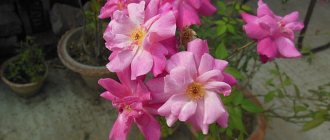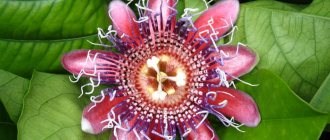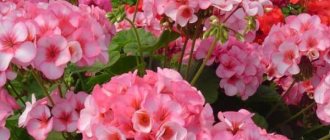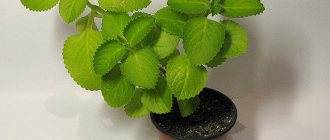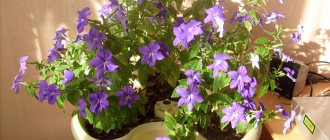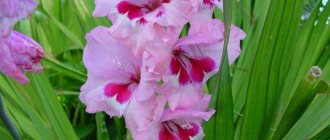Magnolia is an evergreen (deciduous) plant. The flowers are very fragrant, white, pink or cream in color with large leaves. The flower is a poisonous plant, but contains a lot of useful substances: essential oils, flavone glycosides, rutins and alkaloids. Growing magnolia flowers at home has been gaining popularity in recent years. There are ornamental species bred specifically for home cultivation.
Is it possible to grow magnolia in an apartment or at home?
There are several types of magnolia bred specifically for growing in pots at home. They are characterized by their small size, bright leaves and colorful blooms.
Important! Magnolia flowers, which have a pronounced aroma, can cause an allergy attack. Therefore, before growing, you need to make sure that no one in your household is allergic to the plant.
How an indoor magnolia flower blooms
In its natural habitat, magnolia blooms throughout the growing season. When flowering ends, the petals fall and this phenomenon is called “magnolia rain”. Then, in place of the previous flowers, fruits with large seeds are formed, similar in appearance to a pine cone.
Under favorable conditions, magnolias bloom for the first time 8 years after planting, and some species even earlier.
The colors of the flowers are varied: white, pink, lilac, purple. There are species that first form flowers and then leaves, and some bloom with leaves already present.
Important! It is not recommended to stay near a magnolia for a long time, as there is a high probability of headaches.
A photo of a magnolia flower grown at home is presented below.
A photo of a blooming magnolia in a pot proves that the seedling can be grown at home.
Magnolia propagation methods
This tree can be propagated by seed and vegetatively. The magnolia fruit is a multi-leafed plant that resembles a cone or a curved pod.
When the time comes for ripening, the fruit cracks and the seeds become exposed. They are in a fleshy shell, which must be removed before planting. The soft coating should soften and turn brown.
If the seeds become moldy during storage, they will no longer be suitable for planting.
Magnolia seeds are heart-shaped. They are placed in a substrate of sand and peat and sent to the basement for stratification. The soil is kept moist, with little access to oxygen. Seeds are sown in April in a darkened area, deepening by 3 cm.
In the first three years, emerging magnolia seedlings need to be covered for the winter. For these purposes you can use:
- spruce branches;
- agrofibre or dry foliage.
If the seedlings have always been grown in seedling boxes, then they can be brought into the greenhouse for the winter.
Magnolia is a tree that gives an intoxicating and delicious aroma of lemon and vanilla; in the land of the rising sun it is a symbol of chastity. This flowering shrub is treated with no less love in our country.
The sight of a blooming magnolia explains the love for the tree and the desire to have it in your garden or on your personal plot. Trees can be pyramidal or spherical in shape, which makes it possible to fit them perfectly into any landscape.
Under what conditions does the home magnolia flower grow?
The indoor magnolia flower prefers sunny, well-lit places, but can grow in partial shade.
While the plant is small, it is placed on a window located in the east, since the south side is too bright and burns may occur. Mature plants with a wide crown are placed on a stand near the window.
Advice! You should not hide magnolia deep into the room - this can weaken the plant and impair flowering.
Indoor magnolia (pictured) prefers fresh air and in summer it is better to take it outside.
Magnolias in the apartment are comfortable at a temperature of +20÷24 °C. But in winter, in order for flower buds to form, it is moved to a room where the air temperature is no higher than + 15° and no lower than + 7° and there are no drafts.
Examples in landscape design
Magnolia grandiflora looks excellent both in single and group plantings. On the site it can be planted with ornamental coniferous crops, since they also prefer to grow in slightly acidic soils. In this case, large-flowered magnolia can be planted together with low thuja or juniper.
Grandiflora looks impressive surrounded by flowers - peonies, nasturtiums, chrysanthemums. It also organically combines with other woody plants - small-leaved linden, viburnum.
In large areas, large-flowered magnolias are often used to create beautiful alleys. Similar alleys can be found in popular Black Sea resorts. The most famous example here is the alley of large-flowered magnolias, located on the territory of a protected area in the resort city of Sochi (Riviera Park).
How to germinate magnolia from seeds, watch the video.
Types of magnolia for growing at home
To grow home magnolia, breeders have developed the following varieties:
- Brackens Brown Beauty;
- Figo;
- Coco;
- George Henry Kern;
- Daphne.
Also, some amateur flower growers grow the following varieties at home: Sulanja Lenny, Little Jam, Sensation.
Brackens Brown Beauty
An evergreen, broad-leaved shrub with large, oval, dark green leaves. The outer side of the leaves is smooth, and the reverse side is covered with a small brownish fluff. The flowers are white with a pleasant aroma.
Figo
An ideal variety for home growing. An adult shrub grows up to 1.5 m in height.
The flowers of the Figo variety are small (up to 4 cm in diameter), cream, white, yellow or lilac in color, with a pungent aroma, which is especially noticeable early in the morning. The aroma is reminiscent of the smell of a banana, for which the shrub is often called the “banana tree”. The leaves are green, oblong in shape.
It is preferable to plant in slightly acidic, well-drained soil with plenty of organic amendments. The shrub can grow in both sun and partial shade. Bushes grown in conditions of periodic shading are loose and spreading, while in the sun they are compact and dense. The culture loves moderate watering and does not tolerate transplantation.
Coco
The variety is actively grown at home. The leaves are wide, green or dark green, pointed at the apex and wedge-shaped at the base. The flowers are white, cream-colored with a delicate aroma.
George Henry Kern
Slow-growing (15 cm per year), deciduous, hybrid shrub with a spherical crown. Characterized by abundant flowering and frost resistance.
The flowers are purple on the outside and white on the inside. Blooms before leaves appear. The foliage is dark green in summer and brownish-bronze in fall. Prefers partial shade and acidic to neutral soils.
Daphne
Low-growing shrub with late flowering. The flowers are bright yellow, up to 10 cm in diameter. The leaves are green, wide and medium in size.
Sulanja Lenny
The variety was bred at the beginning of the 19th century in France. A frost-resistant, slow-growing deciduous shrub reaches a height of about 3 m.
The leaves are large, green, and in autumn - from yellow to light brown. The flowers are large, white, shaped like tulips, and when fully bloomed, like lotus flowers. They have a strong aroma.
The shrub grows in sun and partial shade. Prefers black soil, acidic or slightly acidic soil.
Sensation
The variety begins to flower in the first years after planting. Grows up to 3 m in height and up to 1.5 m in width. The flowers are rich yellow in color, shaped like a tulip, up to 20 cm in diameter.
Magnolia plant - description
The colorful magnolia is an evergreen or deciduous shrub or tree, in good conditions reaching a height of 15 m. Its bark is ash-gray or brown, smooth or grooved. The leaves are large, 12-20 cm long, whole, oval, leathery, dark green and shiny, dotted with reddish fluff below. Their life span is short - as young shoots grow, they fall off. The magnolia indoor plant can be grown as a bonsai. Compact low-growing varieties for home:
- Little Gem;
- Hasse;
- Brackens Brown Beauty;
- Magnolla Figo.
What does a magnolia flower look like?
Blooming magnolia is abundantly covered with large cup-shaped flowers, reaching 20 cm in diameter when opened. The flowers are spectacular, fragrant, buds like floating water lilies are located at the tips of the branches. They consist of a three-leaf calyx, 6-9-12 petals overlapping each other, located in 2,3,4 circles. The petals are colored white, lilac, pink or purple.
Majestic inflorescences bloom on the bush from spring to September; the plant blooms for the first time at the age of 7 years. During flowering, magnolias captivate with their tenderness, harmony and purity. Afterwards, reddish-brown fruits are formed on them, resembling a pine cone; when it opens, smooth reddish or orange seeds hang on thin threads.
How to grow magnolia at home
Caring for magnolia grown at home is quite easy; you must follow certain rules.
How to choose a pot for a magnolia flower
House magnolia is a low-growing shrub that requires growing in a spacious and deep flowerpot. This is a prerequisite for growing a plant that has a highly developed root system in the form of a rod.
Magnolia is also planted in tubs so that it is convenient to take it outside in the summer.
Preparing soil for growing magnolia at home
To grow home magnolia, you need light, nutritious soil with a sufficient content of organic substances in the form of peat and humus. Optimal soil acidity should be in the range from 7 to 7.5 units.
Landing algorithm
To prepare the soil, take turf soil, leaf humus, peat and manure in a ratio of 2:1:1:0.5. A drainage consisting of charcoal and moss is placed at the bottom of the pot. Carefully place the magnolia seedling and cover it with soil. Then the soil is compacted and watered abundantly. After this, the soil is fluffed up and mulched.
What soil and pot is suitable
To grow magnolia in a pot, you need light and nutritious soil with a slightly acidic reaction.
You can use azalea substrate or mix:
- 2 parts of turf land;
- 1 part each of leaf humus and peat;
- 0.5 parts manure.
You should definitely put drainage at the bottom of the flowerpot. They can use a mixture of moss and charcoal.
Although indoor magnolias are compact, the flowerpots for them should be quite spacious and deep. Plants have a highly developed root system in the form of a rod.
How to grow magnolia at home
Caring for indoor magnolia involves following certain growing rules.
During the growing season, it is better to water your home magnolia with rain or settled (filtered) water. The plant reacts poorly to chlorine and lime in tap water. Under no circumstances should moisture stagnate or the soil dry out.
During cold periods, the frequency of watering is reduced; moistening is carried out no earlier than the soil is half dry. After each watering, to maintain moisture, the soil is loosened and mulched, covered with bark or sawdust.
If the room has dry air, you can spray the plant with water, which will have a beneficial effect on the well-being of the magnolia, or place the pot on a tray with wet pebbles.
From the beginning of the growing season until the onset of autumn, magnolia is fed twice a month with special fertilizers. Fertilizing is also carried out in winter, but not more than once a month.
To form a beautiful shrub, you need to prune the plant at a young age. Pruning is carried out in early spring or after flowering has ended. In adult magnolias, only dry and weak shoots are removed, since in adulthood they react worse to pruning.
Home magnolia propagates in three ways:
- When propagated by seeds, the planting material is filled with water for three days, then the shell is removed from the seeds, washed thoroughly and treated with fungicides. Planted in a prepared container, it is advisable to choose a container with opening valves (for ventilation and creating a greenhouse effect) or covered with a piece of polyethylene. Place in a room with a temperature of +20÷25 °C. When the first shoots appear, the film is removed. When two leaves appear on the plant, it is transplanted to a permanent place. With the seed propagation method, the varietal characteristics of the plant are not preserved, so for ornamental plants it is better to use other methods of propagation;
- cuttings. A two-year-old semi-lignified cutting up to 20 cm long is separated from the bush, on which 2 leaves are left. The cuttings are treated with a root-forming preparation and planted in peat. The optimal temperature for cuttings is from 18 to 25 °C. Over the course of 8 weeks, the root system should form and the cuttings should be transplanted to a permanent location;
- layering. Place a container with prepared soil next to the magnolia and dig the lower part of the branch into it. Secure with a hairpin or wire. After two months, roots should appear, then the cuttings are separated from the mother plant.
1. Magnolia care
1.1.When it blooms
The specific flowering period depends on the plant variety. Magnolia blooms from spring to autumn; plants bloom for the first time at the age of 7 years.
1.2.Growing at home
The plant will appreciate being outdoors in the warm season. Young bushes should be pruned immediately after flowering to give them a beautiful compact shape. Adult magnolias do not tolerate pruning well, so it is recommended to remove only old and weak branches from them.
1.3.Reproduction, magnolia from seeds
Seeds, cuttings, air layering and grafting. Seeds are sown in spring in well-moistened soil made of peat and sand, germination takes a long time - up to 1.5 years. The seeds are first subjected to cold stratification. Rooting of cuttings, which should be about 10 cm long, is carried out in damp sand using growth hormones.
1.4.Transplant
Young magnolias are transplanted in the spring, with the beginning of new growth, but before flowering, annually, into larger pots. Mature plants are often quite impressive in size and replanting them is difficult. Just replace the top layer of soil with fresh one every year. When replanting, try not to unnecessarily disturb the root system - use transshipment.
1.5.Temperature for keeping indoor magnolia
The plant is kept during the growth period at a normal temperature ranging from 18 to 24 ° C. In the winter months, in order to form flower buds in the subsequent season, the plant requires a dormant period at a temperature of about 12 - 15 ° C and lower. Do not expose magnolia to temperatures below 6°C.
1.6.Lighting
The shrub is light-loving; place it in a place where it will receive direct sunlight in the morning or evening every day. When grown in partial shade, flowering will be less abundant.
Frequency and rules of transplantation
Early spring before flowering is the most favorable time to transplant magnolia growing at home in a pot.
The pot should be wide and spacious, since magnolia has a powerful root system. The plant does not tolerate full transplantation, so it is replanted, leaving soil on the roots. Drainage must be placed at the bottom of the pot.
The replanting process is carried out every year, using a pot with a diameter 10 cm larger than the previous one.
An adult home magnolia is large in size and replanting becomes difficult, so once a year the top layer is changed by adding fresh substrate.
In order not to disturb the root system of an adult plant, the transshipment method is used when replanting.
Planting and care
Before planting magnolia grandiflora, you need to select a well-lit place for it on the site, protected from drafts and cold winds. It is not allowed to plant seedlings in cold, drafty areas, or in places where water stagnates.
A favorable period for planting young plants is the end of spring - the beginning of summer (after the threat of night frosts has disappeared). Magnolias planted during this period will be able to fully adapt to a new location and build up sufficient root mass by autumn. It is allowed to plant young plants in the fall, in the second half of October.
Grandiflora prefers light, fertile soils with a neutral or slightly acidic reaction.
Areas with heavy clay soils and, conversely, very loose sandy soils are absolutely not suitable for planting and growing them.
After choosing a place to place the seedlings, they begin to arrange a planting hole; the recommended dimensions are 60x60x60 cm. A layer of drainage materials is laid at the bottom of the hole - gravel, large pebbles, pieces of brick.
A nutritious soil mixture consisting of garden soil with the addition of compost, peat and sand is poured over the drainage. A seedling is placed vertically in a hole along with a lump of earth on the roots, and it is covered on all sides with soil mixture. During planting, make sure that the root collar of the plant is at a height of no more than 3 centimeters from the surface of the earth. After planting, the young plant is watered and the ground around it is sprinkled with mulch.
The main care for large-flowered magnolia consists of regular watering, periodic feeding, and sanitary pruning.
This plant should be watered as the surface of the soil in the tree trunk dries. You should not allow water to stagnate around the magnolia, since its root system painfully tolerates waterlogging of the soil.
Magnolia grandiflora begins to be fed from the third year after planting. During the period of growing green mass and flowering, this plant spends a large amount of resources, which can lead to a decrease in its resistance to pathogens and pests.
For feeding, a mineral-organic solution is used, consisting of the following components:
- water – 10 l;
- rotted manure – 1 kg;
- saltpeter – 20 g;
- urea – 15 g.
The recommended consumption rate is 3-4 buckets of solution per 1 adult tree. In just one season (from spring to autumn), magnolia is fed 2-3 times.
After the plant has flowered, gardeners carry out sanitary pruning. During this procedure, dry, crooked and extra branches that thicken the crown are cut out. The cut areas are treated with garden varnish.
Considering that magnolia is a heat-loving plant, it is recommended to cover it for the winter. To arrange shelters, burlap and spruce branches are used. On the eve of winter, the tree trunk circle is covered with mulch to protect the roots from freezing.
Pests and diseases
Due to the inexperience of flower growers, the following diseases may appear in home magnolia:
- If fertilizers are applied excessively, the plant’s growth stops and the salinity of the soil around the plant increases, and the leaves dry out. In order to fix everything, water the seedling generously with warm water once a week.
- If there is too much lime in the soil, the roots and leaves become sick. The pathology is called chlorosis. To eliminate the problem, change the soil under the plant.
- In hot weather, magnolia can be attacked by spider mites. To combat it, the plant and soil are sprayed with Actellik.
- Magnolia can develop spotting, which is fungal in nature. For treatment, copper-containing preparations are used, for example, copper sulfate or Bordeaux mixture.
- Young, frozen shoots may suffer from gray rot. For treatment, drugs based on bacteria are used, for example, Fitosporin or Baktofit.
- Another disease is powdery mildew. Sulfur preparations, for example, Thiovit, are used for treatment.
- If there are small round spots on the leaves, this is black spotting, which is caused by phytopathogenic fungi. The drug Skor is used for treatment.
general information
In countries where magnolia grows in the wild, legends are made about it and magical properties are attributed. This is a very ancient, beautiful and hardy representative of the family of the same name. Even outside the flowering season, magnolia is decorative with its succulent leathery leaves.
It is believed that magnolia was already in the era of dinosaurs, and survived them safely. There are archaeological finds in the form of fossilized flowers that are many millions of years old. And this is not so surprising, considering how well the plant adapts to different conditions even in our time.
Magnolia is a tree or spreading shrub with an average height of 5-20 m. Large buds open into large emerald leaves of ovoid or oval shape. Depending on the variety, the diameter of the flowers ranges from 6 to 35 cm, and each consists of 6-12 petals.
The most common shades are white, pink, red, lilac and their variations. Magnolia blooms in early spring or, less frequently, in early summer, and then forms cone-shaped fruits.
Photo: wallbox.ru
Magnolia - what you need to know when buying
To date, more than 250 varieties have been bred in the world. All of them are divided into 2 groups:
- shrubby – height no more than 5 meters,
- tree-like - from 5 to 15 or more meters.
In turn, the groups within themselves are divided into:
- frost-resistant,
- thermophilic.
Important! Choose a variety that suits the climatic conditions of your region.
If you buy a ready-made seedling, pay attention to the following points:
- The root system must be completely contained in the container and covered with soil.
- The height of the trunk is at least 1 meter.
- Inspect the trunk, branches, leaves. Any deformation is a signal of trouble.
- The color of a healthy leaf depends on the age of the young shoot - from light green to dark green.
- The presence of buds is an important, but not obligatory indicator of health and readiness for planting. It’s just that a seedling with buds will undergo rehabilitation easier and faster after the stress associated with moving.
Pharmacological use of Magnolia grandiflora
The leaves and flowers of this plant contain about 2% magnoline alkaloid, which has a powerful hypotensive effect on the human cardiovascular system. Official medicine uses the liquid extract of Extractum Magnoliae grandiflorae fluidum to permanently lower blood pressure for a long time. Due to the adrenolytic and hypotensive properties of the leaves and flowers of Magnolia grandiflora, this plant is considered poisonous, and any drugs based on it are taken strictly as directed and under the supervision of a doctor.
Chinese healers recommend drops and tinctures of Magnolia grandiflora for the treatment of runny nose and other respiratory diseases, diseases of the gastrointestinal tract (dysentery, vomiting, nausea, diarrhea, flatulence), fever and malaria.
Traditional medicine recommends tinctures from the bark, leaves and seeds of this type of magnolia for external use for joint diseases, fungal infections of the skin, and hair loss. Rinsing your mouth with a water tincture of the seeds prevents the development of caries, and taking it orally gets rid of intestinal parasites. The strong aroma of magnolia flowers can cause dizziness and pain. Contact with mucous membranes of essential oils from magnolia painfully irritates the affected area. If such situations arise, you should go out into fresh air and rinse the affected organs (eyes, nose, mouth) with water.
Distribution across the planet
The peoples of Japan and China have beautiful romantic legends about how magnolia appeared.
According to the official version, the French botanist Charles Plumier brought magnolia seeds to Europe and in 1703 named this plant after his colleague Professor Pierre Magnol. The extraordinary beauty of the tropical tree and the fragrance of huge lily-like flowers captivated the European nobility. And magnolia grandiflora spread throughout the countries of Europe and Asia in a short time.
Since 1734, Magnolia grandiflora has been grown in gardens as a cultivated plant. Magnolia grandiflora first appeared in Russia in 1817. Scientists at the Nikitsky Botanical Garden have been acclimating this heat-loving beauty to our climate for about 40 years. Today it adorns the streets of Georgia, Central Asia, the Astrakhan region, the embankments of Crimea and the Krasnodar Territory.
